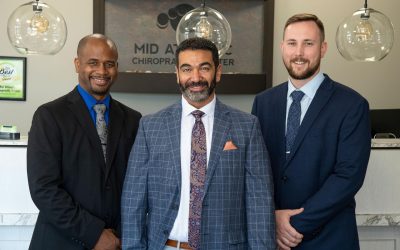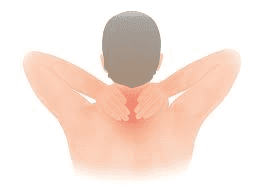Understanding Herniated Discs
Herniated discs, also known as slipped or ruptured discs, occur when the gel-like center of a spinal disc protrudes through the tough outer layer. This can result in irritation of nearby nerves, leading to pain, numbness, or weakness in the back, neck, arms, or legs. Disc herniation often stems from degenerative changes in the spine or sudden trauma.
Various factors, including age-related wear and tear, improper lifting techniques, excess body weight, and poor posture, can cause herniated discs. In some cases, sudden trauma from accidents or injuries can also trigger disc herniation. Genetics may also play a role in predisposing individuals to developing herniated discs.
Causes of Herniated Discs
Factors such as age, repetitive strain, obesity, and genetic predisposition can contribute to the development of herniated discs. A herniated disc can also occur due to sudden trauma or injury, such as a fall or lifting heavy objects improperly. The degenerative changes in the spine can weaken the discs, making them more susceptible to herniation.
Individuals with herniated discs may experience a range of symptoms, including localized pain in the affected area, numbness or tingling sensation, muscle weakness, and radiating pain that travels along the nerve pathway. The severity of symptoms can vary based on the size and location of the herniation, as well as individual factors such as overall health and lifestyle habits.
Symptoms Associated with Herniated Discs
Herniated discs can manifest with symptoms like localized pain, numbness or tingling, muscle weakness, and radiating pain that travels along the nerve pathway. The severity of symptoms can vary based on the size and location of the herniation, as well as individual health factors. Seeking timely medical attention is crucial to prevent further complications.
Patients with herniated discs may experience different symptoms, including back pain, sciatica, muscle weakness, and numbness. The location and severity of the herniation can influence the type and intensity of symptoms. Early diagnosis and appropriate treatment can help in managing symptoms effectively.
Role of Chiropractic Care in Herniated Disk Recovery
Chiropractic care offers a non-invasive approach to treating herniated discs through spinal adjustments, mobilization techniques, and spinal decompression treatment. Chiropractors aim to relieve pain and improve the body’s natural healing processes by realigning the spine and reducing pressure on the affected discs.
A herniated disk chiropractor uses various techniques to treat herniated discs, including spinal adjustments, spinal decompression therapy, and exercises to strengthen supporting muscles. By addressing the root cause of the issue and promoting spinal health, chiropractic care can aid in the recovery process and reduce the risk of recurrence.
Chiropractic Techniques for Treating Herniated Discs
Chiropractors employ spinal adjustments, spinal decompression therapy, and targeted exercises to address herniated discs. These techniques aim to realign the spine, relieve pressure on the affected discs, and promote healing. By restoring proper spinal function, chiropractic care can alleviate pain and improve mobility.
Chiropractic care for herniated disks focuses on restoring proper spinal alignment, relieving pressure on the affected discs, and promoting natural healing. Through techniques such as spinal adjustments and decompression therapy, chiropractors can address herniated discs effectively. These treatments aim to improve spine function and alleviate pain.
Stages of Healing in Herniated Disc Recovery
The healing process for herniated discs involves several stages, including initial inflammation, tissue repair, and remodeling. Chiropractic care may help accelerate the healing process by promoting blood flow, reducing inflammation, and enhancing tissue regeneration. By supporting the body’s natural recovery mechanisms, chiropractic adjustments can aid in disc healing.
Herniated disc recovery progresses through stages of inflammation, tissue repair, and remodeling. Chiropractic care may expedite this process by enhancing circulation, reducing inflammation, and stimulating tissue regeneration. Chiropractic adjustments can contribute to efficient disc recovery by facilitating the body’s healing response.
Preventative Measures to Avoid Disc Recurrence
Chiropractors emphasize the importance of posture correction, regular exercise, and lifestyle modifications to prevent herniated disc recurrence. Individuals can reduce the risk of future disc herniation episodes by promoting proper body mechanics and strengthening the supporting muscles. Maintaining a healthy weight and avoiding activities that strain the spine are also crucial in preventing recurrence.
To avoid herniated disc recurrence, chiropractors recommend maintaining proper posture, engaging in regular physical activity, and adopting ergonomic practices. Strengthening the core muscles, improving flexibility, and practicing good body mechanics can help support spinal health and reduce the likelihood of future disc herniation. Lifestyle adjustments, such as weight management and stress reduction, are also essential for long-term spine care.
Incorporating Exercise and Posture Correction in Recovery
Exercise plays a crucial role in herniated disc recovery by strengthening the muscles that support the spine and improving flexibility. Chiropractors may recommend specific exercises to target areas of weakness or imbalance, promoting optimal spinal function. Correcting posture habits can also alleviate pressure on the spine and reduce the risk of re-injury.
Incorporating targeted exercises and posture correction strategies can enhance herniated disc recovery by supporting spinal alignment and function. By strengthening the core muscles, improving flexibility, and maintaining proper posture, individuals can reduce strain on the spine and promote long-term spine health. Chiropractors provide guidance on safe and effective exercises to complement the recovery process.






